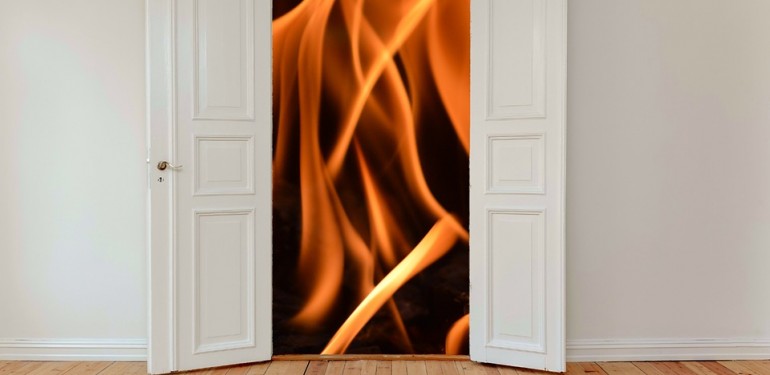
Fire Stopping: Making Buildings Safer
The term fire stopping describes Passive Fire Protection (PFP) measures designed to compartmentalise, contain and slow the spread of fire and smoke throughout a building. Legislated by the Buildings Regulations Act 2010 and accompanying Approved Documents, fire stops are essential to facilitating the safe evacuation of occupants and assisting fire fighters in controlling and tackling a blaze.
Buildings and fire safety
We all know fire needs fuel in the form of combustible materials and oxygen to take hold. Effectively inhibiting the spread of flames and smoke through a building requires both the use of fire resistant/retardant materials and the correct sealing of joints and openings between fire separating elements.
Obviously you can’t plug up every hole. Buildings naturally need openings in order to allow access and air flow. But anything that creates an opening or cavity – like doors, windows, electrical cables, sockets, joins, ducts and pipes – leaves a gap that can compromise a property’s fire resistance.
That’s where passive fire protection comes into its own. With modern fire stopping installations, protections can remain inert without impacting day to day function, only coming into play in the event of a fire.
Fire stopping materials
While good old fire doors are probably the best-known fire stops, there are other less obvious methods. Fire resistant mineral wool fire stop slabs for compartment walls and floors, gypsum sealants for floor penetrations and mineral fibre materials for roof spaces and voids are just some examples.
The cornerstone of fire stopping measures is the use of intumescent materials. These products are specially formulated to expand on exposure to heat. When used to line door frames, joins and other openings, they will swell to create a cavity barrier in the event of a fire.
Fire stopping products come in many forms, depending on their intended use. Intumescent strips can be used to seal door frames, for example. And there are also intumescent foams and fillers for linear joints and compartment walls, cavity wall fire socks, fire stop collars for pipes, hoods to provide protection around ceiling lights, intumescent grilles for air ducts and fire stop electrical socket inserts. A good fire stopping company will be able to advise you on the right products to suit your building’s unique requirements.
Local fire stopping contractors
Fire safety isn’t an area where you can afford to take any chances. Leaving individual contractors to play their separate roles in fire stop installation in your building is a risky strategy. The best way to ensure comprehensive passive fire protection and full compliance with your statutory obligations, is to consult a specialist fire stopping company.
As third-party accredited fire stopping contractors, our team have the training and experience to give your property the protection it needs. We know that every building is different, that’s why we approach each job as a bespoke project. Our Exova BM TRADA Q-Mark certification means you can trust us to get the job done to a high quality, using approved British Standard fire-rated materials.
For professional installation and maintenance that gives you peace of mind, find out more about our fire stopping services in South Wales, the South West and South East England on 01269 841416 or email: mailto:info@groompropertymaintenance
You can also check our Fire Stopping Installer certification, use the BM TRADA certified companies finder.